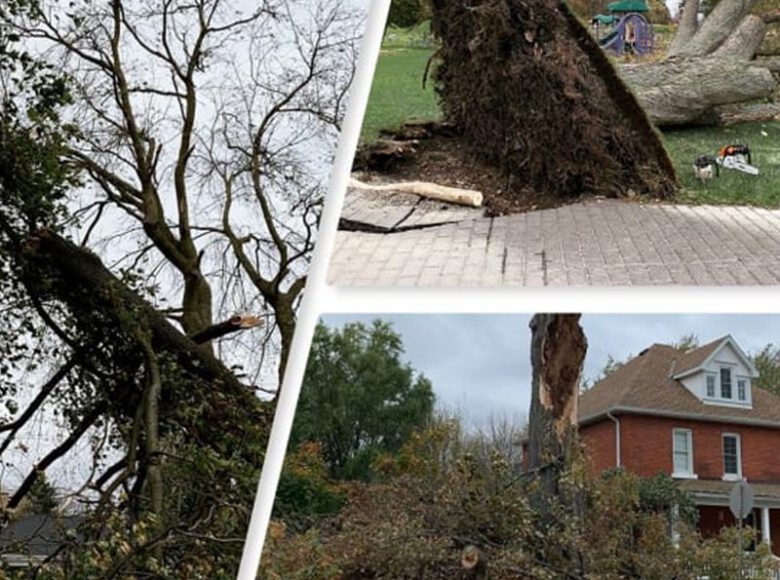Tips for Protecting Your Trees from Storm Damage
species selection and planting location. There are many tree that are susceptible to storm damage. For example, deciduous trees such as willow (Salix spp.), Siberian elm (Ulmus pumila), birch (Betula spp.), and Manitoba maple (Acer negundo) are more likely to be damaged compared to hardier species like sugar maple (Acer saccharum). If you reside in a rural area with nothing to decrease wind speeds, or in an area with high precipitation rates, you may want to avoid planting deciduous trees that are known to be brittle.We recommend that you inspect your trees throughout the year. Make note of any dead limbs, cracks, cavities, burls, included bark and open wounds. One, or multiple of these signs may indicate the tree’s structure is compromised. With the additional weight from ice or snow, the risk of failure increases. Secondly, factors of stress from previous seasons can increase the risk of storm damage.
A mature tree which suffered from drought stress from the summer is more likely to have storm damage compared to another mature tree that had no previous stress. Past stress can force the tree to use nutrient resources to defend itself rather than maintaining strong structure. If you are unsure of what to look for, or the severity of the risk, call your local certified arborist to assess your tree.
What can you do?
You can clear ice and snow from small trees and shrubs if you can reach them from the ground safely. Use a broom to gently knock off snow and ice. If it doesn’t come off easily, leave it alone. Please don’t whack the branches when they’re brittle with the winter cold. You can also clear small, fallen branches from your walkways and when shovelling, try not to pile snow at the base of the tree.
Pruning and tree maintenance goes a long way. As homeowners, investing and take care of the trees on your property could inhibit limbs from failing. This minimizes potential damages to your property and belongings. A tree that is pruned regularly and fertilized is set up for success and therefore, minimizing storm damage. We recommend pruning your tree when needed and fertilizing your tree once every spring and once every fall.
Although these practices do not mitigate all chances of tree failure, it does set you and the tree up for success. If you have a fallen tree or dangerously hanging broken branches, click HERE to contact Safe Tree to schedule your free quotation.
***Please do not try to handle it yourself: Let us put your mind at ease knowing the work will be completed safely, keeping you and your home safe.***

